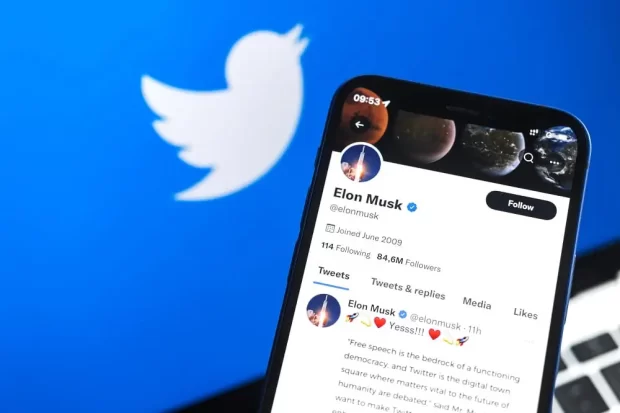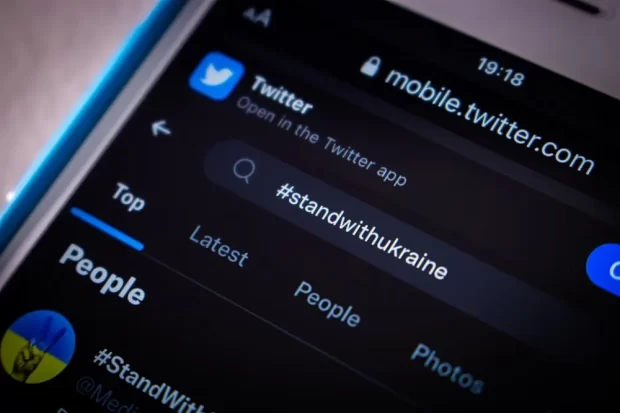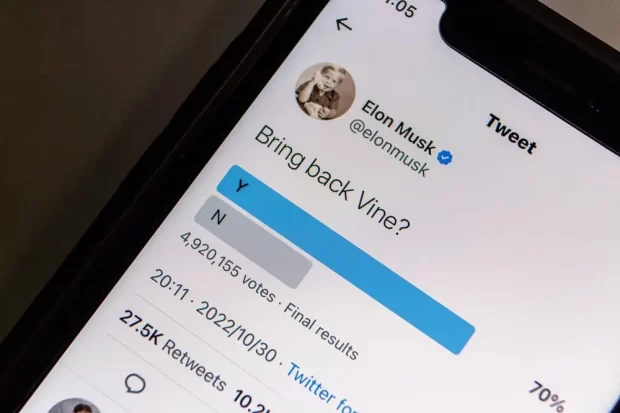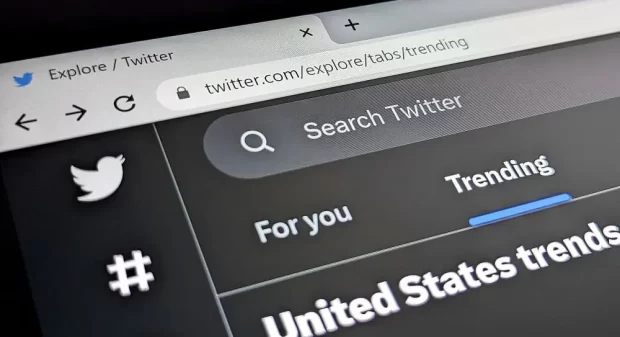In today’s digital age, Twitter wields immense power as a platform for sharing ideas, opinions, and content. With over 300 million active users, it’s a bustling hub of activity where your voice can make a significant impact. Imagine your tweets reverberating across the Twitterverse, resonating with your audience, and leaving a lasting impression. To unlock this potential, you need to master the art of crafting compelling tweets that grab attention and engage your audience.
1. Understanding Your Audience
To write compelling tweets that truly resonate with your followers, the first step is to gain a deep understanding of your audience. Think of your Twitter followers as your digital companions on this social media journey. The more you know about them, the better you can tailor your content to their preferences and expectations.
Defining Demographics
Start by defining the demographics of your audience. This includes key factors such as age, gender, location, and interests. These demographic insights provide you with the foundational knowledge needed to create content that speaks directly to your followers.
- Age: Knowing the age range of your audience can significantly impact your tweet content. For instance, if your followers are predominantly teenagers, your tone and topics will differ greatly from those of an audience primarily consisting of professionals in their 30s.
- Location: Understanding where your followers are located can help you craft tweets that are relevant to their time zones and local events. This can be crucial for scheduling tweets effectively.
- Interests: Delve into the interests of your audience. What are their passions, hobbies, and areas of expertise? Tailoring your tweets to align with these interests ensures that your content remains engaging and relevant.
By defining these demographics, you can create a more accurate persona of your typical follower, allowing you to step into their shoes and see the Twitter world from their perspective. This insight is invaluable when crafting tweets that resonate deeply.
Psychographics of an Audience
Beyond demographics, consider the psychographics of your audience. This involves understanding their attitudes, values, and behaviors. What drives their interaction with Twitter content? Are they seeking information, entertainment, inspiration, or connection? Knowing their psychographics helps you fine-tune your messaging and strike the right emotional chords.To gather this data, use Twitter Analytics, which provides invaluable insights into your audience’s demographics, interests, and behavior patterns. Additionally, engage with your followers through surveys or polls to gain direct feedback. As you accumulate this knowledge, you’ll be better equipped to create tweets that not only grab attention but also foster a sense of community and connection among your followers. Understanding your audience is the foundation upon which your compelling tweets will thrive.

2. Crafting Compelling Tweets
Creating compelling tweets that instantly captivate your audience is an art form. In the fast-paced world of Twitter, where countless tweets flood timelines every second, it’s crucial to make yours stand out. Crafting attention-grabbing tweets involves mastering the art of brevity, clarity, and impactful messaging.
Editing Techniques
While Twitter’s character limit may seem restrictive, it can be a powerful tool for crafting concise, impactful messages. Here are some editing techniques to help you create compelling tweets:
- Remove redundant words or phrases – every word in a tweet should serve a purpose.
- Use strong, action-oriented verbs to convey your message.
- Be specific – provide details or examples that paint a clear picture.
- Embrace the power of emojis – use them sparingly and appropriately to enhance your message.
- Utilize lists and bullet points – they make your content easier to scan and comprehend.
- Pose questions, tease upcoming content, or offer partial information to pique curiosity.
- Include a call to action (CTA) – encourage your followers to take a specific action, such as retweeting, liking, or visiting a link.
- To conserve character space, use URL shorteners like Bitly or TinyURL when sharing links.
- Proofread – typos and grammatical errors can detract from the impact of your tweet.
Remember that tweets are fleeting, so your content must be instantly captivating. A well-edited tweet not only grabs attention but also makes your message more shareable, increasing its reach. Crafting compelling tweets is an essential skill for any Twitter user looking to engage and inspire their audience.
3. Utilizing Visuals and Media
Visual content, such as images, videos, GIFs, and even polls, can make your tweets more eye-catching and engaging. Twitter is a platform that thrives on quick, visual content, and tweets with visuals tend to get more attention and interaction.
Start by considering the type of visual content that complements your tweet. If you’re sharing a stunning view, a travel photo can do wonders. For a product announcement, a well-designed image or video showcasing the product’s features is ideal. Always make sure the visual you choose enhances or complements your tweet’s message.
Image Selection
When selecting images for your tweets, keep these considerations in mind:
- Relevance: Ensure that the image is directly related to the content of your tweet. Irrelevant visuals can confuse your audience.
- Quality: Employ pictures of excellent quality that are bright, well-lit, and visually appealing. Blurry or pixelated images can deter engagement.
- Size: Optimize the size of your images to fit Twitter’s recommended dimensions. This prevents cropping and ensures your visuals display correctly.
- Originality: Whenever possible, use original visuals. If you must use stock images, choose ones that aren’t overused and have a unique angle.
- Branding: If you’re tweeting on behalf of a brand or business, maintain consistency in your visuals. Use branded colors, fonts, and styles to reinforce your brand identity.
Videos and GIFs
Videos and GIFs can convey a message or story more effectively than static images. Consider creating short, attention-grabbing videos or GIFs to accompany your tweets. Twitter’s built-in video player makes it easy to share this type of content.
Polls and Interactive Media
Twitter allows you to create polls and share interactive media, like quizzes. These can be excellent tools for engaging your audience and collecting valuable feedback or insights.
Accessibility
Ensure that your visual content is accessible to all users, including those with visual impairments. Add alt text descriptions to images and consider captioning videos.

4. Leveraging Hashtags and Keywords
On Twitter, hashtags and keywords are your navigational tools. They help you reach a broader audience, tap into trending conversations, and enhance the discoverability of your tweets. These elements help your tweets surface in searches, trend alongside popular topics, and ultimately reach a wider and more relevant audience. Here’s how to leverage them effectively:
Effective Hashtag Usage
Hashtags are Twitter’s way of organizing conversations. When you include a hashtag in your tweet, it becomes a clickable link that leads to a feed of all tweets using the same hashtag. Here’s how to use them to your advantage:
- Relevance: Choose hashtags that are directly related to the content of your tweet. Using irrelevant or trending hashtags just for visibility can backfire and alienate your audience.
- Trending Hashtags: Keep an eye on the trending hashtags relevant to your niche or topic. Joining trending conversations can expose your tweet to a broader audience. However, make sure your contribution is meaningful and not forced.
- Researching Hashtags: Several online tools and Twitter analytics platforms can help you discover relevant hashtags. Tools like Hashtagify and Trendsmap provide insights into trending and popular hashtags in real-time.
In addition, always look at what hashtags your competitors or industry leaders are using. This can give you ideas and insights into effective hashtags for your compelling tweets.
Keyword Integration
Keywords are the words or phrases that best describe the content and purpose of your tweet. While hashtags focus on discoverability within Twitter, keywords play a crucial role in search engine optimization (SEO) and improving your tweet’s visibility on both Twitter and search engines like Google.
- Keyword Research: Before crafting your tweet, conduct keyword research to identify the terms and phrases your target audience is likely to search for. Tools like Google Keyword Planner or Ubersuggest can assist in this process.
- Strategic Placement: Once you’ve identified your keywords, strategically place them in your tweet. Include them in the tweet’s text, but avoid overloading your message with keywords, as this can make it appear spammy.
- Natural Language: Integrate keywords seamlessly into your tweet’s text, ensuring that they fit naturally and don’t disrupt the flow of your message. Write for humans first and search engines second.
5. Creating Engaging Questions and Polls
Engagement on Twitter isn’t just about sharing information; it’s also about starting conversations. Questions and polls are powerful tools for sparking interactions and involving your audience in meaningful discussions. By incorporating thought-provoking questions and well-structured polls into your Twitter strategy, you can foster engagement, gain insights, and build a more interactive and responsive online community. Here’s how to make the most of them:
Pose Thought-Provoking Questions
Establish yourself as a thought leader by asking insightful questions related to your niche or industry. Encourage your audience to share their thoughts and revelations.
Types of Questions:
- Open-Ended: These questions invite detailed responses and encourage users to share their thoughts. They’re excellent for generating discussions and gaining diverse perspectives.
- Multiple-Choice: Provide multiple options in your questions to make it easy for users to participate. These questions are ideal for quick surveys or preference-based queries.

Running Twitter Polls
Use polls to interact with your audience and gain insightful data. They allow users to vote on specific topics or choices, providing you with instant feedback.
Poll Strategies:
- Be Concise: Keep poll questions and answer choices concise and easy to understand. Twitter has a character limit, so make every word count.
- Timing: Consider the timing of your polls. Posting them when your audience is most active can result in higher participation.
- Visuals: Adding images or GIFs to your polls can make them more visually appealing and increase engagement.
- Follow-Up: After the poll ends, share the results and your analysis. This not only closes the loop but also keeps the conversation going.
Frequency: Don’t overdo it with polls. Use them strategically, and avoid bombarding your followers with too many in a short period of time.
6. Timing and Frequency
Always remember that Twitter is a dynamic platform, and trends can change. Timing and frequency are key factors in determining the success of your tweets. Understanding when and how often to post can significantly impact your reach and engagement. Here’s how to master the art of timing and frequency on Twitter:
Posting Schedule
Regularly analyze your tweet performance and be willing to adjust your timing and frequency strategy based on the data. Consistency and responsiveness to your audience’s behavior will help you maximize your impact on Twitter.
- Timing Matters: Consider your target audience’s time zone and daily routines. Posting when they are most active increases the likelihood of your tweets being seen and interacted with. Tools like Twitter Analytics can help you identify when your followers are online.
- Consistency Is Key: Establish a consistent posting schedule. Whether it’s daily, several times a week, or weekly, sticking to a routine helps your audience know when to expect your content.
Scheduling Tools
To maintain a consistent posting schedule, you can use scheduling tools like Hootsuite, Buffer, or TweetDeck. These tools allow you to plan and automate your tweets in advance. This is especially helpful if your audience is in a different time zone.
Frequency Guidelines
- Quality Over Quantity: Avoid overposting. It’s better to have a few high-quality tweets that resonate with your audience than to flood their timelines with content that gets overlooked.
- Balance Promotional and Non-Promotional Content: Mix your tweets to strike a balance between promotional posts (e.g., product announcements) and non-promotional content (e.g., industry insights, engaging questions). Overly promotional accounts may turn off followers.
- Monitor Engagement: Pay attention to the engagement metrics of your tweets. If you notice that certain days or times result in higher likes, retweets, or replies, adjust your posting schedule accordingly.
Weekend Posting: Weekends can be a great time to experiment with posting, as some users are more active when they have leisure time. Test different posting times on weekends to see what works best for your audience.

7. Measuring and Adjusting
Writing compelling tweets isn’t a one-time effort; it’s an ongoing process that requires monitoring and adjustment. To truly optimize your Twitter presence and engage your audience effectively, you need to measure your tweet performance and make adjustments based on the data you gather.
Analyzing Tweet Performance
After you’ve been tweeting for a while, it’s crucial to assess how your tweets are performing. This involves analyzing various engagement metrics to gain insights into what’s working and what needs improvement. Here are some key metrics to focus on:
- Impressions: This metric tells you how many times your tweet has been seen by Twitter users. A high number of impressions suggests your tweet has good visibility.
- Engagement Rate: This includes metrics like likes, retweets, replies, and clicks. A high engagement rate indicates that your tweet resonates with your audience.
- Click-Through Rate (CTR): If your tweets contain links, CTR measures how many users clicked on those links. It’s essential for tracking the effectiveness of your call-to-action (CTA).
- Follower Growth: Monitor how your tweets impact your follower count. High-quality content often attracts new followers.
- Conversion Tracking: If you’re using Twitter for business purposes, track conversions such as sign-ups, downloads, or purchases that result from your tweets.
Key Metrics
- Likes: The number of likes your tweet receives indicates how well it resonates with your audience. If a tweet gets a lot of likes, consider creating more content in a similar style or on the same topic.
- Retweets: Retweets show that your content is shareable and valuable. When users retweet your content, it extends its reach to their followers.
- Replies: Compelling tweets often receive replies. Pay attention to the quality of these responses; thoughtful discussions can boost your Twitter authority.
- Clicks: If you include links in your tweets, track the number of clicks. It’s a crucial metric to determine the effectiveness of your content in driving traffic.
Iterative Improvement
Once you’ve collected data on your tweet performance, it’s time to put that data to use. Here’s how you can apply an iterative improvement process:
- Identify Trends: Look for trends in your data. Are there specific types of content, posting times, or hashtags that consistently perform well?
- Experiment: Based on your findings, experiment with different tweet formats, content styles, and posting schedules. Use A/B testing to compare the performance of various approaches.
- Set Goals: Establish specific goals for your Twitter presence. Whether it’s increasing engagement, driving website traffic, or growing your followers, having clear objectives will guide your strategy.
- Regularly Review Data: Continuously monitor your tweet analytics and make adjustments accordingly. Twitter analytics tools can provide valuable insights.
- Stay Informed: Keep an eye on Twitter trends, algorithm updates, and changes in your industry. Adapt your content to remain relevant.
Conclusion
In conclusion, mastering the art of writing compelling tweets is an invaluable skill in today’s digital landscape. By understanding your audience, crafting attention-grabbing tweets, utilizing visuals and hashtags, creating engaging questions and polls, timing your posts effectively, and measuring your success, you can transform your Twitter presence. As you implement these seven tips, remember that Twitter is a dynamic platform, and your journey to tweet mastery is an ongoing process. Start now, experiment, learn, and watch your tweets capture attention and engage your audience like never before. Your Twitterverse awaits!
If you want to grab the attention on other social media platforms too, do not miss our guide on How to Stand Out on Instagram in 10 Easy Steps.





